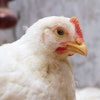An expensive formula for young animals is not necessarily a suitable one. Quite often, such "sensitive" formulas are over-fortified with nutrients and ingredients, let alone additives, which make them not only very expensive, but also ineffective. Let me explain.
Young animals cannot digest normal ingredients, along the lines of cereals and soybean meal, and as such, specialty ingredients are used to help them during the time their digestive system matures. In addition, as their feed intake is invariably low, their diets are relatively rich in nutrients, most likely in amino acids. But, research has shown this should not be necessarily a combined-arms approach.
Animals that suffer from low feed intake, mostly as a consequence of poor health, benefit the most from the inclusion of specialty ingredients, such as extra dairy products, animal proteins and purified vegetable proteins. In contrast, high levels of nutrients are a burden for these animals, as they will not grow to the level sustained by ingested nutrients. Thus, they will have to get rid of excess nutrients, and this creates an unnecessary metabolic burden.
On the other hand, healthier animals will exhibit sufficient feed intake patterns that will allow them to meet their genetic potential for growth. As such, such animals benefit the most from high levels of nutrients, like amino acids, in their feeds. If this is the case, then specialty ingredients are redundant and should be limited as animals eat and grow without much help.
Thus, and this has been proven by Kansas State University work, healthy animals require relatively simple diets with high nutrient density, whereas challenged animals require complex diets that are intermediate in nutrient density.

















